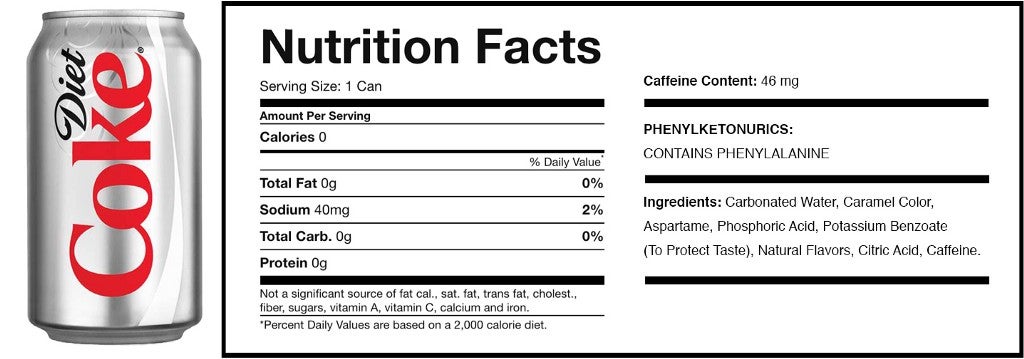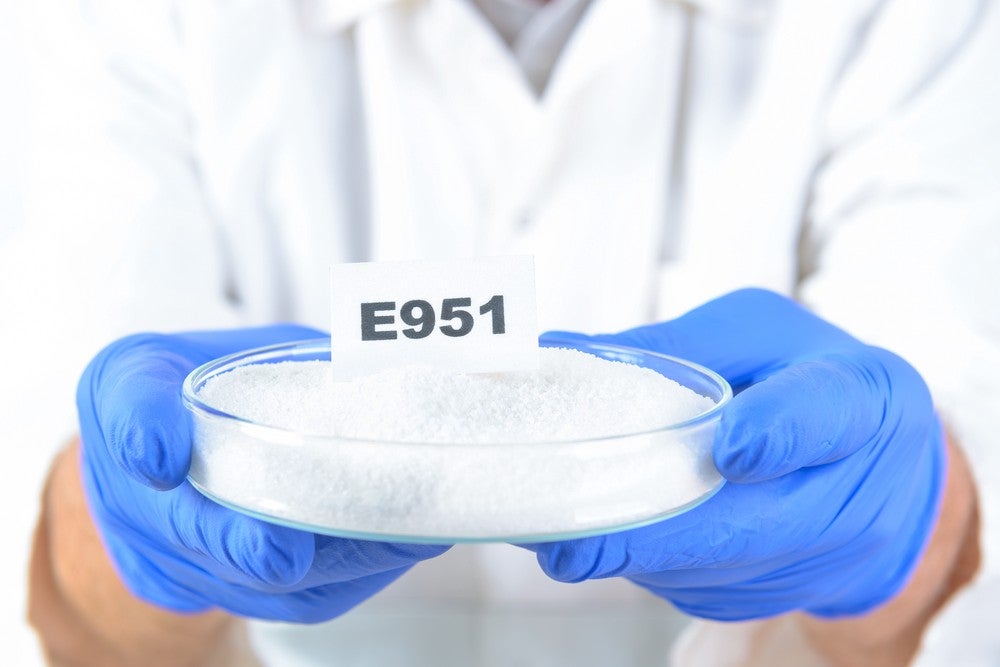We’re often told that you should never eat anything if you don’t recognize everything on the ingredients list. But since most of us have no idea what xanthan gum and potassium benzoate are — or more importantly, what they’re doing to our bodies — we’re decoding the ingredients in America’s favorite snacks with the help of a food scientist. This edition: Diet Coke.

All told, there are eight separate ingredients in Diet Coke, which we’ve broken down in the exact order they appear on a 12-ounce can.

1) Carbonated Water: This ingredient is probably better known as soda water, sparkling water or seltzer water. Whichever name you prefer, it’s just water that’s had carbon-dioxide bubbles added for fizziness.
2) Caramel Color: Made by heating corn or corn sugar and other carbohydrates, caramel coloring has a controversial byproduct called 4-methylimidazole (4-MEI): A 2007 study found that mice fed a diet of 4-MEI developed cancerous lung tumors as a result. The FDA quickly pushed back, noting that a human would have to consume more than 1,000 cans of soft drinks every day for two years to reach comparable levels of 4-MEI.
Who’s right is still unclear — more recent studies argue that levels of 4-MEI are, in fact, high enough in soda and consumed in sufficient quantities by Americans to increase the risk of developing cancer. Once again, however, these studies have been met with skepticism from both other researchers and the beverage industry.
3) Aspartame: Aspartame is an artificial sweetener made primarily out of two amino acids (the building blocks of protein): aspartic acid and phenylalanine. Because aspartame is about 200 times sweeter than sugar, much less of it is needed to achieve the desired sweetness — this, in effect, is why Diet Coke has zero calories.
Several studies, however, suggest that sodas sweetened with aspartame may promote weight gain. One 2016 study showed that low-calorie sweetener users tend to have a higher average body mass index, a 2.6-centimeter larger waistline and a 53 percent higher incidence of abdominal obesity compared to participants who reported never using low-calorie sweeteners. Similarly, a 2008 study found that drinking artificially sweetened beverages was associated with an almost doubled risk of being overweight or obese.
There are two main theories as to why aspartame might have this effect. The first, according to a 2010 Yale study: “Artificial sweeteners, precisely because they are sweet, encourage sugar craving and sugar dependence.” And Diet Coke drinkers might feel like they can treat themselves to something else high in calories since they’re skipping the 140 calories in a regular Coke.
The second (and more complicated) theory has to do with how aspartame affects insulin production. “Aspartame binds to tastebuds in our stomach, which send signals to the pancreas telling it to release insulin,” explains physician and biochemist Cate Shanahan, author of Deep Nutrition: Why Your Genes Need Traditional Food. “Insulin, in turn, shuts down our fat-burning enzymes and ramps up our fat-storing enzymes.” In other words, artificial sugars trick our body into thinking we’re consuming regular sugar, causing it to go into energy-storage mode.

Shanahan adds that some people are so sensitive to the aspartic acid in aspartame that it causes them to experience headaches, dizziness and even confusion.
4) Phosphoric Acid: Phosphoric acid is added to sodas to provide a sharper, more tart flavor. It also acts as a preservative to prevent the growth of mold and bacteria. Shanahan says there’s no real reason to be concerned about the negative effects of phosphoric acid unless you’re prone to heartburn or acid reflux, in which case the high acidity may induce inflammation.
5) Potassium Benzoate: Potassium benzoate is a chemical preservative that blocks the growth of bacteria, yeast and mold. Shanahan says it may have negative effects on our natural aging process: “Potassium Benzoate can interfere with mitochondrial function.” When mitochondria lose their ability to fully convert oxygen to energy, small amounts of this oxygen escape and create free radicals, which have been linked to chronic health problems like cardiovascular and inflammatory diseases, cataracts and cancer.
6) Natural Flavors: Natural flavors are quite literally flavors derived from an actual food source — i.e., strawberry flavoring taken from a real strawberry. Which natural flavors are used to make Diet Coke remains a mystery, since the FDA allows companies to protect their recipes by using vague terminology like “spices” or “natural flavors” when referring to flavoring agents.
7) Citric Acid: Citric acid is a sour flavoring agent derived from citrus. It is often used to keep foods like Diet Coke fresh while they’re sitting on the shelves.
8) Caffeine: Negative effects of caffeine can include addiction, insomnia and irritability. But as far as Shanahan is concerned, “Caffeine helps burn fat.” It does this by stimulating a process called thermogenesis, which converts calories into heat energy (and explains why you might start sweating after drinking a little too much coffee). A 2005 study even found that obese caffeine-drinking dieters saw greater improvements in fat mass, body weight and waist circumference than their less caffeinated counterparts.
The Takeaway
“Even though Diet Coke might not have the calories that a regular Coke does, artificial sweeteners still affect our hormones like insulin in ways that can make us hungrier and reduce the amount of fat we burn,” Shanahan explains. That said, loading up on beverages sweetened with real sugar isn’t necessarily a better idea, since sugar contributes to Type-2 diabetes, strokes, heart disease, tooth decay and obesity.
In other words, Diet Coke isn’t great for you — and probably won’t help you lose much weight — but it still beats the alternative.

